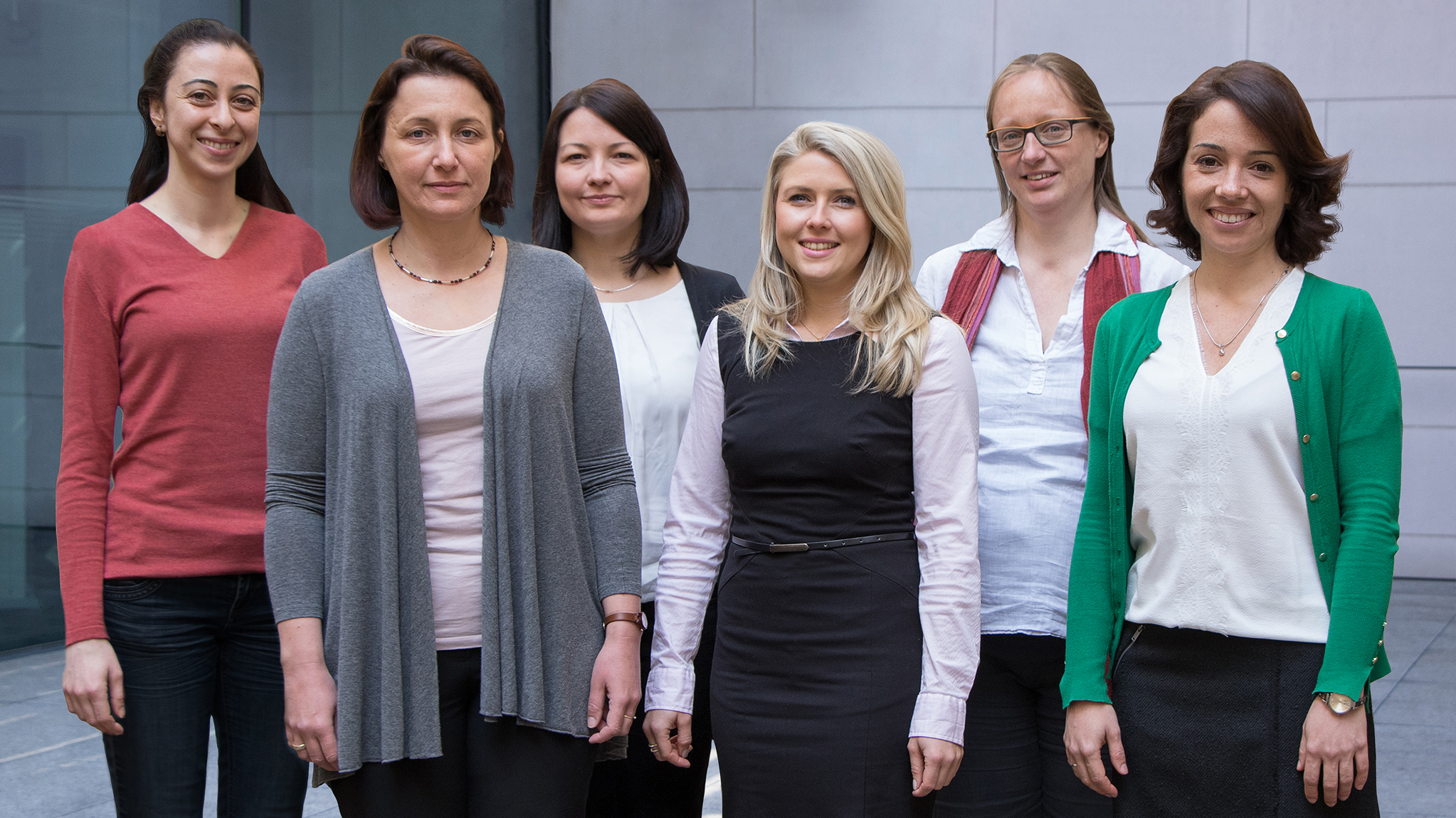Interview with Annamaria Riemer
“Nowadays, we are able to flexibly address a much greater number of issues”

The team from the Professionalizing Transfer Processes Unit headed by Annamaria Riemer analyses the social, political and economic aspects of future technologies. They test knowledge transfer formats and organize cooperation processes between researchers and practitioners. In this interview, she describes what a scenario analysis must do in order to help stakeholders with their strategic alignments and how valuable international project management is for her work at the Fraunhofer IMW.
Dear Ms. Riemer, you have headed the Fraunhofer IMW “Professionalizing Transfer Processes” unit since the beginning of this year. Besides the communication of science and research, you and your colleagues Inga Döbel, Jördis Winkler and Mayra Bezerra Hartmann also look at future analyses. How do companies and organizations profit from scientifically sound future research? Could you cite a real life example? To which specific cases have you applied it?
We work on future-oriented analyses with stakeholders from the science and the practical application area. These analyses make it easier for our customers and partners to make strategic decisions, to define their own objectives more clearly or to develop measures that are important for this. In the research alliance AGENT-3D, for example, we are actively involved with the Fraunhofer IWS and the Fraunhofer IPK and also other partners in identifying the points that are relevant for the alliance's future focus.
You and your team are using the scenario method in your current artificial intelligence and aerospace focused projects. How does this method work, briefly?
In a scenario analysis, we are using a mix of methods that can vary depending on the task on hand. Usually, we not only investigate the actual field but also the relevant context – social, economic or ecological factors that have an impact may be taken on board in the respective analysis. The scenario as such can be created with the help of software. Let's again take the AGENT-3D research alliance as an example – here, we are investigating the socio-economic areas which additive manufacturing will impact on; we also want to find out how the research consortium can position itself long-term. Specifically, this means: Which economic and social factors promote or hinder the use of additive industrial manufacturing methods and how could the way value creation is organized change in future due to the use of additive methods? We are looking at the non-controllable (e.g. trade policy) as well as the controllable elements (e.g. further qualifications gained on-the-job). For this purpose, we first of all identify relevant impacting factors and list them – then we select so-called key factors by asking the question: “Why is this aspect particularly important?” In this way, we reduce around 140 criteria down to only 20, for which we then define different specificity possibilities, meaning lines along which they may potentially develop. In the subsequent consistency analysis, we check which combinations of these specificities show consistence, or do not contradict each other. The results of the consistency analysis are the raw scenarios (usually 3-5) which are then usually formulated as brief descriptions. They are designed to make it possible to envisage the potential future situations and to encourage those to whom they are addressed to discuss the matter.
You work in large consortiums in projects in the area of project communication and results utilization in an international context. What have you and your colleagues learnt in this context that you would not want to have missed out on?
Our collaboration in the INTEGRAL and ALTERFOR projects has allowed us to get to know some good and effective methods and instruments for addressing these topics in an inter- and trans-disciplinary context. As we have to deal with different stakeholders from different countries in the consortium, it is advisable to intensively pursue the internal communication and the organization of the collaboration and workflows. Luckily, this works well thanks to the extremely professional project management. Well-organized and effective video and Skype conferences with participants who are spread over several continents are everyday routine in our projects. We have learnt much about intensive collaborative efforts with the partners that we meet “live” only once a year.
In April 2017, you will be able to look back over ten years of working at the Leipzig Fraunhofer Center. You have been the Knowledge and Technology Transfer division's deputy head for quite some time know. You are also one of the institute's first aiders. How has the institute developed further during the time you have been there, in your opinion? What did you find particularly impressive? Where do you see future development potential?
Especially the organizational processes have developed further, and the institute has grown considerably – when I started at what was then the Fraunhofer MOEZ, we were a lot smaller. The spectrum of the topics has also changed and has become more extensive: Nowadays, we are able to flexibly address a much greater number of issues – which allows us to concentrate on current concerns. I believe that the project work harbors a huge potential, although we should continue to ensure that we stay up-to-date, for example with regard to learning new methods. I would like to see an even better balance between the project work and the time spent on scientific further development.